Nobl TR37 Wheelset
Available Sizes: 27.5’’ & 29’’
Version Tested: Industry Nine Hydra Hubs, 27.5″ size
Internal Width:
- Front: 31 mm
- Rear: 30 mm
Stated Weight:
- Front rim: 430 g
- Rear rim: 485 g
- Wheelset, as tested: 1,715 g
Blister’s Measured Weight (includes pre-installed rim tape and valve stems):
- Front: 765 g
- Rear: 989 g
- Total: 1,754 g
MSRP:
- Rim only: $450
- Wheelset as tested: $1,625
Build Specs:
- Nobl TR37 rims, 27.5’’, 32 hole
- Industry Nine Hydra hubs
- Sapim D-Light spokes
- Sapim aluminum nipples
Test Bike: Nicolai G16
Reviewer: 6’, 165 lb / 183 cm, 74.8 kg
Test Location: Western WA
Test Duration: 4 months
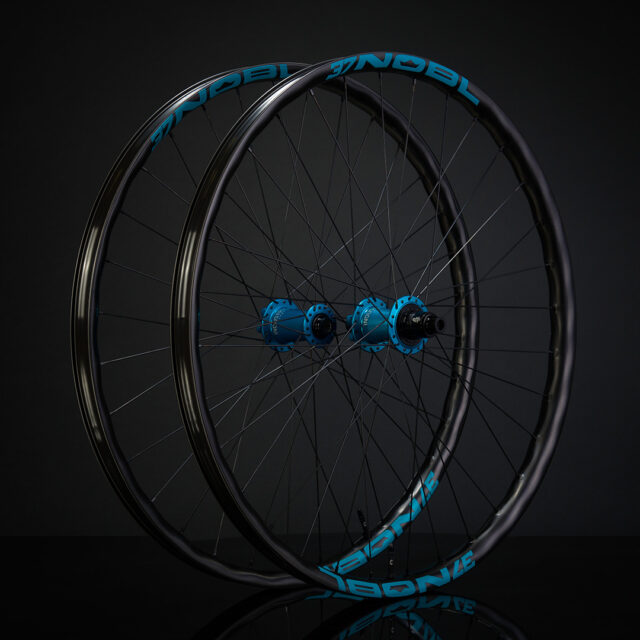
Intro
Nobl has been making carbon rims for about a decade now, but their latest generation — including the Enduro-oriented TR37 — is a significant departure from their prior offerings. For one, there are new front- and rear-specific rim layups, with the rear rim adding extra material for durability and stiffness and the front paring some away to cut weight and improve compliance. And for another, there’s the rim’s elaborate “Sine Wave” profile, which flattens the outer wall of the rim between spoke holes in the name of increasing lateral stiffness.
That’s all interesting, but how do the new TR37s actually ride, and who do they make the most sense for? Read on to find out.
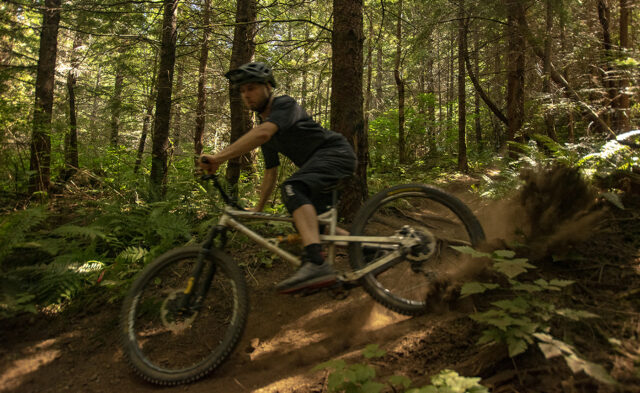
Design
Nobl took the approach of offering front- and rear-specific rims for the TR37. Both share the same 37 mm external width (hence the TR37 name), but the front rim features a 31 mm internal width, while the rear is slightly narrower at 30 mm. The extra 0.5 mm per side is taken up by thicker bead lips on the rear rim for improved impact resistance. The added material also means that the rear rim is about 55 g heavier than the front.
Both rims have a relatively shallow cross-section (20.5 mm) and Nobl says that the front and rear rims’ lateral stiffness is about the same, but that the front rim is 25% less stiff vertically. It’s not an entirely new idea — the Crank Brothers Synthesis wheels use a similar arrangement — but it is still more common to see the same rim used front and rear on modern wheels.
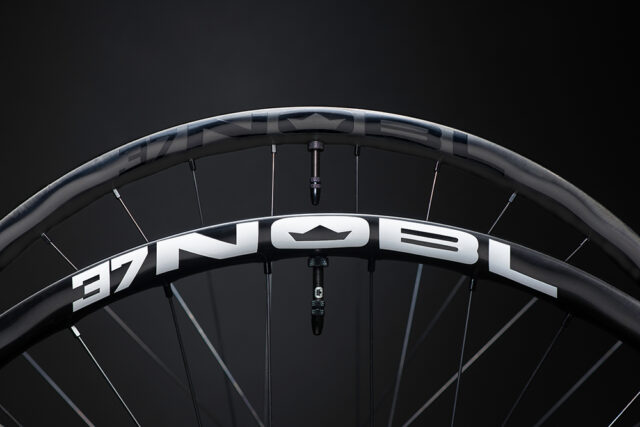

Another interesting feature of the TR37 rims is that their cross-section profile isn’t constant around the rim. Asymmetric rim profiles are pretty common these days, and the TR37s are also offset for improved spoke bracing angles. But in addition, the outer surface of the TR37 rim has a wavy shape, with the rim flattening out between the spoke holes. Nobl says that this bolsters lateral stiffness compared to a more conventional, consistent profile.
I’ve found ~30–32 mm to be a really good internal width for running most modern 2.35–2.5’’ tires, and the TR37s fall neatly into that range. And if one rim is going to be wider than the other, it makes sense for it to be the front. Most people will run either the same width tires on both ends or a slightly wider one up front, and slightly squaring off the front tire profile so that it engages the side knobs a touch sooner makes sense, though the 1 mm difference between the TR37 rims isn’t big enough to make a massive difference.
Weight & Comparisons
At 430 g, the TR37 front rim is notably on the lighter side for a modern carbon Enduro rim, while the 485 g weight for the rear is a bit more average. That adds up to a pair that’s a touch lighter than average for the class, but isn’t a wild outlier. And for a rim that’s meant to hold up to aggressive use, that’s probably a good middle ground. The lighter front rim does seem like a sensible way to cut weight — rear rims are substantially more susceptible to impact damage than fronts — and the overall package is relatively light without being worryingly so. For reference, here are the stated rim weights for the TR37 compared to a bunch of its notable competitors.
[All the stated weights below are for a single 27.5’’ rim.]
420 g Stan’s Flow CB7 (Carbon)
430 g Nobl TR37 Front (Carbon)
440 g Revel RW30 (Carbon)
470 g Santa Cruz Reserve 30 (Carbon)
485 g We Are One Union (Carbon)
485 g Nobl TR37 Rear (Carbon)
490 g We Are One Agent (Carbon)
490 g DT Swiss XM 481 (Aluminum)
494 g Race Face ARC30 (Aluminum)
535 g DT Swiss EX 511 (Aluminum)
535 g Enve M730 (Carbon)
680 g Stan’s Flow EX3 (Aluminum)
Build Options
The TR37 wheels are offered in 27.5’’ and 29’’ diameters, both only available with 32 spoke holes. There’s a great deal of customization on offer though, including a wide array of graphics options, several choices for hubs and spokes, as well as your choice of nipple colors. Nobl has a nice configurator on their website where you can run down all the options and spec out your wheels to your liking.
The TR37 rims retail at $450 each, and wheelsets start at $1,200 with DT Swiss 350 hubs. Hope, Industry Nine 1/1 and Hydra, Onyx, Chris King, and DT Swiss 240 hubs are also available for an upcharge. Axle options vary by hub model, but Nobl offers your choice of configuration, including mixed-wheel-size builds and mix-and-match hub setups (e.g., if you’ve got a newer Boost fork on a non-Boost frame, they can accommodate that).
Our test wheelset was built up with Industry Nine Hydra hubs and Sapim D-Light spokes. Including a swap to silver graphics from the stock black, this bumped the wheelset price to $1,625. That’s very close to what We Are One asks for their Union wheelset with the same Hydra hubs, but significantly less than some other competitors, including the Revel RW30 or the Crank Brothers Synthesis. All told, it’s a good value for a high-end carbon wheelset with top-tier hubs. While aluminum wheels are, of course, generally much cheaper, they typically can’t match carbon when it comes to their combination of weight, stiffness, and durability, and that’s held true for the TR37.
Nobl builds the TR37 rims in China and they aren’t shy about that fact. While a few brands — notably Enve, We Are One, and Revel — heavily tout their carbon fiber rim production taking place in North America, Nobl has a page on their site discussing their partnership with a Chinese factory to build their rims and highlight the purportedly-excellent working conditions and technical expertise there. Nobl then builds the wheels at their facility on Vancouver Island in British Columbia.
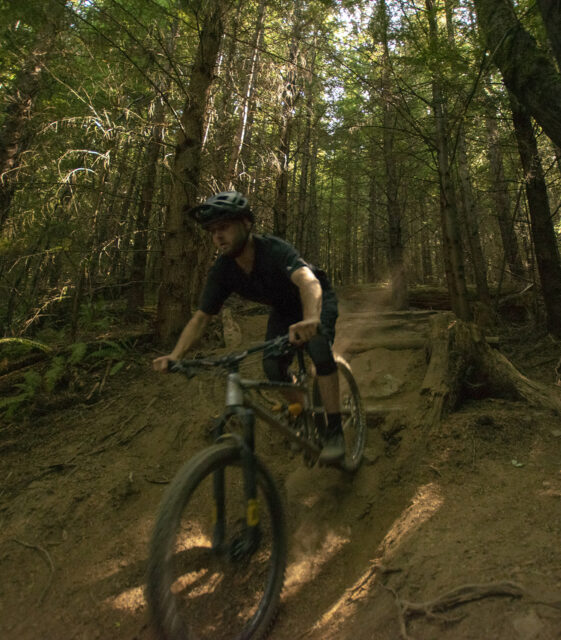
Warranty
Nobl offers a lifetime warranty for riding-induced damage and a 50% replacement cost discount for non-riding damage to the original owner. Interestingly, Nobl’s warranty page also notes that the rims must be built with butted spokes to receive full coverage. You can find the full rundown of the warranty information on their site.
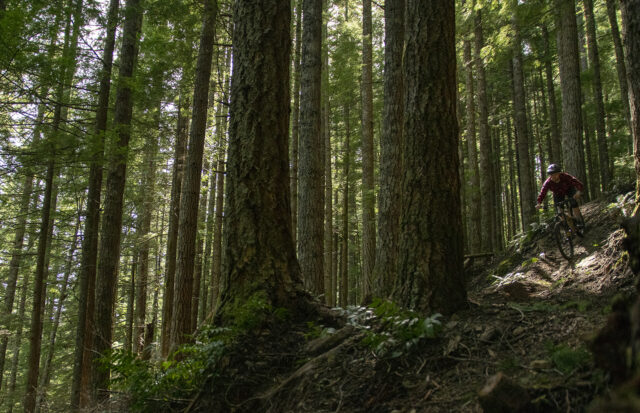
Performance
The most notable trait of the TR37 wheels is that they’re one of, if not the most compliant carbon wheels I’ve ever ridden. Particularly in the early days of carbon mountain bike wheels, most tended to be stiff … to a fault — exceptionally precise, but also punishing and harsh in rougher terrain. More modern carbon rims have generally improved in ride quality, but the TR37s truly stand out for how completely they mitigate the harshness compared to carbon rims of old.
That’s not to say that the TR37s are super flexy either, though. While they’re not as laterally stiff as some of the other carbon rims that I’ve ridden, they’re still considerably more so than most aluminum rims — especially ones that come in at a comparable weight — and I think that combination of very-solid-but-not-class-leading lateral stiffness + unusually good vertical compliance makes the TR37 a very compelling option for a lot of people.
Compared to the We Are One Union, the TR37 feels a little less stiff laterally, but also transmits a bit less feedback to the rider. I think part of that is down to the TR37 (especially the front) simply not being as stiff vertically as the Union, but the TR37 also feels a bit more damped in how it rebounds from being flexed, whether in a corner or from a head-on impact. Between the differences in stiffness and damping, the Union feels notably more lively than the TR37, whereas the TR37 feels more compliant. I don’t think there are any truly “right” answers here — both feel like they exhibit a blend of traits that make sense to be paired together; the goals and the result are just different. Which you prefer is truly going to be a matter of personal preference.
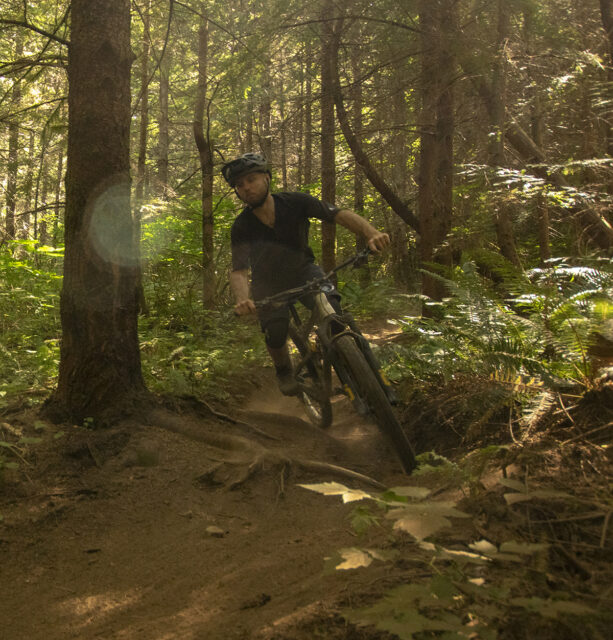
In terms of lateral stiffness and damping, the TR37 feels a lot more similar to the Santa Cruz Reserve 30 rim. But as with the comparison to the Union, the TR37 again feels more vertically compliant. And while the TR37 feels significantly more heavily damped than the We Are One Union, it’s not as far toward the ultra-damp end of the spectrum as the Revel RW30. The TR37 just hits a really nice middle ground that will work well for riders who are interested in the benefits of carbon, but who are more concerned about avoiding a rim that feels unduly harsh than they are in seeking out the absolute stiffest option they can get their hands on. For folks looking for something that’s a bit more notably stiff and lively, I’m still a huge fan of the We Are One Union; for the more compliance-focused crowd, the TR37 is a really good option.
At 1,715 g for the complete wheelset in a 27.5’’ diameter, the TR37 wheels are also quite light for a wheel meant for Enduro use, and that low weight is readily apparent on the way up. Compared to a lot of aluminum wheels that weigh 200–400+ grams more, the TR37 accelerates more easily.
It’s especially noticeable on really steep climbs where you’re grinding so slowly that you lose speed between each pedal stroke and need to spin the wheels back up with each turn of the pedals. Those types of climbs aren’t ever much fun, but a really light wheelset helps, and the TR37 wheels are some of the lightest I’ve ridden that are still meant for aggressive riding on longer-travel bikes.
We’ve spent a lot of time on several pairs of Industry Nine Hydra hubs, and as with the other pairs we’ve tested, the ones laced into the TR37 wheels have been trouble-free. They’re a really good hub option, particularly for riders looking for the absolute most points of engagement that they can get from the rear hub. At 690, they’ve got far more POE than just about anything else out there, aside from instantaneous Sprag Clutch designs such as those from Onyx. The Hydra’s added engagement points can be nice when looking to ratchet the pedals up a particularly hairy technical climb, but in my book are more of an added luxury than something I feel like I really need.
When it comes to durability, the TR37 wheels haven’t given me much to report, either. They’ve held up without incident and showed up at my door well built — they’ve given me no reason to pick up a spoke wrench over four months of testing. And while I haven’t managed to pinch-flat a tire on the TR37, I can remember a couple of rim strikes that I was sure were going to do in my rear tire. Chalk it up to good luck or maybe the thicker bead hook on the TR37 rear rim, but both the tire and wheel escaped unscathed. Especially given that the TR37 is on the lighter end of the spectrum in this category, that was good to see.
Bottom Line
The Nobl TR37 isn’t the absolute stiffest carbon rim out there but it’s a great option for riders who might be worried about other carbon rims being too stiff, and the TR37 is still much more stiff and precise than most aluminum wheels — especially ones that are in the same ballpark when it comes to weight. The TR37 wheels are really nicely compliant, notably light for an Enduro-oriented rim, and are offered at a competitive price with a wide array of hub options and tons of choices for customization.


Great review. It would be interesting to me to contrast these to something like the Zipp 3 Zero Moto wheels, where they are going for equivalent compliance at both ends.
Yes! I have the 3zero Motos and they’re SO HEAVY!
Don’t get me wrong, they’re awesome, but I’m building a new wheel set and I think I’ll go with TR37s.
Hi. I am very curious as to how this TR37 rim was compared with We Are One Union rim. Were they tested on the same bike with same tire? I did read a lot of threads where people said WeAreOne Union felt compliant. So just wondering if TR37 will actually be more compliant.
Now already the third rim within a year broken, sorry people from nobl, they are not reliable.
My 2018 TR38 with Onyx hubs has been bullet proof. I’m a big guy, and ride hard. My onyx hub just blew out this morning, spokes are at end of life popping randomly, but the rim has never failed me after 5 years and 10k rugged trail miles. I’m ordering a TR37 replacement today, appreciate the review. It certainly sounds like the TR37 is worth the extra $100 over the TR38 which they are still selling.
You guys should consider rating all the wheels you review on a spectrum. Hard for the reader to get an idea of how they compare otherwise.
I am adhering to Mr. Golay’s “run wheels that complement your frame stiffness” theory and will be speccing these on a Banshee Titan V3.2 for next season.